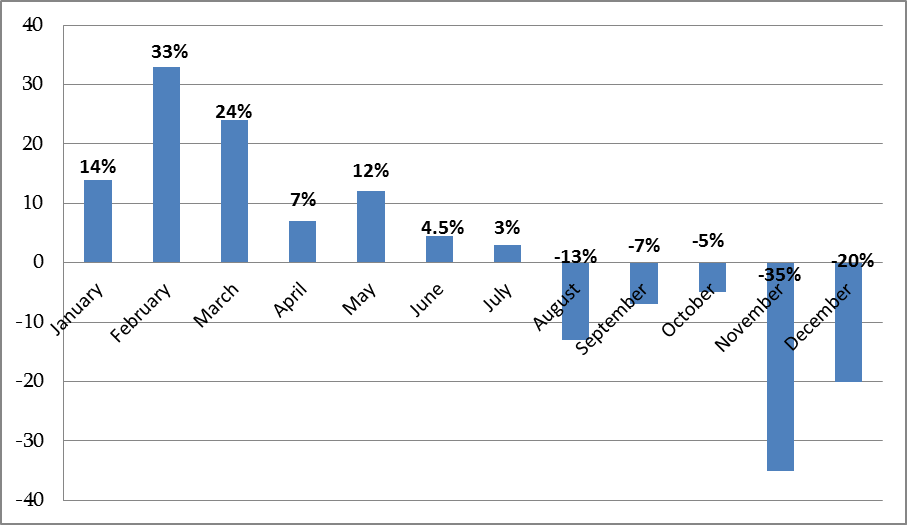On 18 February 2015, at the plenary session of the Parliament of Georgia, the Parliamentary Minority MP, Zurab Melikishvili, elaborated upon the country’s economic situation, including the trend of a decrease in exports. He stated: "There was a 30% decrease in exports in January. The trend of the decrease in exports started approximately in August of last year. I can tell you that there was about a 35% decrease in November and a 20% decrease in December." According to the MP, the amount of export decreased, instead of increasing, after signing the Deep and Comprehensive Free Trade Agreement (DCFTA) with the European Union.
FactCheck once again took interest in the export data of Georgia and verified the accuracy of Mr Melikishvili’s statement.
According to the data of the National Statistics Office of Georgia, the amount of exports decreased by 30% in January 2015 as compared to the same period of the previous year and amounted to USD 156 million. It should also be noted that the amount of export in January 2015 is 20% less than that of January 2013. External trade turnover (9%) and imports (1%) also decreased in January 2015.
The amount of exports from Georgia decreased by 2% in 2014. The trend of the decrease in exports has been observed since August 2014. The amount of exports decreased by 13% in August, 7% in September, 5% in October, 35% in November and 20% in December.
Chart 1: Export Dynamics in 2014
The amount of exports to the Commonwealth of Independent States decreased by 10% in 2014. The Commonwealth of Independent States received about 51% of the overall exports from Georgia. In addition, the amount of exports to Azerbaijan, as Georgia’s largest trading partner, decreased by USD 165 million. Among other major trading partners, the amount of exports to Armenia, Ukraine and Kazakhstan also decreased. There was a trend of a decrease in the amount of exports to Russia, Turkey, the USA and China in 2014.
According to the data of January 2015, the amount of exports to the Commonwealth of Independent States decreased by 51% and amounted to USD 55 million. The amount of exports to Azerbaijan, Armenia, Russia and Turkey also decreased significantly in January 2015. It should also be pointed out that the export of motorcars, which has the largest share in Georgia’s exports, decreased by 49%.
The Deep and Comprehensive Free Trade Agreement (DCFTA) between Georgia and the European Union was enacted on 1 September 2014. The agreement enables Georgia to freely move goods, services and capital on the internal market of the European Union. It is logical to expect that the enactment of this agreement should facilitate the growth of export from Georgia to the EU member states. The amount of exports to the European Union member states was almost similar to the same period of the previous year. The amount of exports to the EU decreased significantly in October 2014. The amount of exports from Georgia to the EU member states increased by just 2% in 2014. It should also be noted that the amount of exports to the EU increased by 35% in January 2015, reaching USD 61 million.
Conclusion
The amount of exports from Georgia decreased by 30% in January 2015 as compared to the same period of the previous year. The trend of a decrease in exports has been observed since August 2014. The amount of exports decreased by 13% in August, 7% in September, 5% in October, 35% in November and 20% in December. The amount of overall exports decreased by 2% in 2014.
FactCheck concludes that Zurab Melikishvili’s statement: "There was a 30% decrease in exports in January. The trend of the decrease in exports started approximately in August of last year," is TRUE.
Tags:









